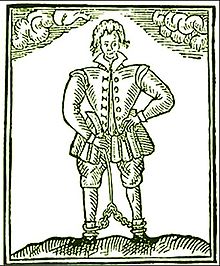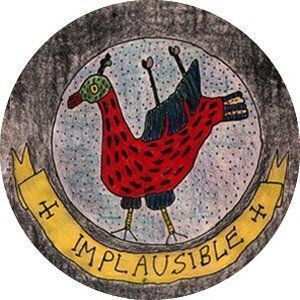I have a terrible memory. I sometimes wonder if my inability to remember things might have something to do with the ruinous debauches of my Wilderness Years, but I suspect my forgetfulness preceded them, and that my memory was never much cop in the first place. I barely recall much of what I have written and posted here over the years. This morning, casting about in my puny brain for a topic, I thought “Aha! I know! I will write about Dobson discovering the Pillow Book of Sei Shōnagon and deciding to write a Pillow Book of his own!”
I got as far as writing an opening line about Dobson and Marigold Chew sitting at breakfast one fabulously dreary morning in the early 1950s when a faint ping! within my bonce halted me. “I’ve already done this, haven’t I?” I said, to a nearby sock, for want of any other interlocutor. The sock did not reply, but a quick search confirmed that, yes, six years ago I wrote about this very thing. Maybe you lot had forgotten about it too. Here it is again:
Capacious and pulsating it may have been, but Dobson’s brain contained many, many pockets of ignorance. He was in his mid fifties, for example, when he first came upon the Pillow Book of Sei Shōnagon, a work of which he had no previous inkling. He did not read it, merely noting the title on the spine of a copy lodged on the bookshelf of his friend Ah-Fang Van Der Houygendorp, the Sino-Dutch artist and mountaineer.
Back at home later that day, he mentioned it to Marigold Chew.
“Did you know that an eleventh century Japanese bint wrote an entire book about pillows?” he asked.
“Yes, Dobson, of course,” said Marigold Chew, “I have borrowed it from the mobile library more than once, and read it from cover to cover.”
“Speaking of the mobile library,” said Dobson, and he embarked on a long-winded and pettifogging digression upon the mobile library, which in that place at that time took the form of a cart pulled by an elegant yet tubercular drayhorse, the cart piled high with hardbacks covered in greaseproof paper jackets, the drayhorse chivvied on its way by an equally elegant and equally tubercular librarian-carter, a man of grim countenance and terrible personal habits who bore a distinct resemblance to the actor Karl Johnson, noted for his roles as elderly peasant Twister Turrill in Lark Rise To Candleford and as Wittgenstein in Derek Jarman’s Wittgenstein. In fact, it may even have been Johnson himself, moonlighting as a mobile librarian to supplement his thespian earnings. Dobson posited this possibility, but doubted it was true, as we, too, must doubt it until all the evidence is in.
So implacable was the pamphleteer’s babbling that Marigold Chew was unable to get a word in edgeways, and was thus given no opportunity to point out to Dobson that the Pillow Book of Sei Shōnagon, like all pillow books, was not actually a book about pillows, but a collection of lists and aphorisms and observations and jottings and poems and opinions and anecdotes. Had he ceased prattling for but a moment, Dobson would have learned this, and not, when eventually he exhausted the topic of the mobile library and the greaseproof paper jackets and the drayhorse and the librarian-carter and the actor and the fictional peasant and the non-fictional philosopher, gone scurrying off to his escritoire to sit and scribble the following:
I have learned that a thousand years ago, a woman from the land of Yoko Ono wrote an entire book about pillows. Such is human progress that in the intervening millennium there must be much, much more to be said on the subject. Clearly I am the pamphleteer to take on this daunting task. I shall set to work on the Pillow Book of Dobson as soon as I have taken a nap. NB: The nap will of course be research for my Pillow Book, as I shall be resting my head upon a pillow while I nap, and present my findings as soon as I wake up.
As far as we know, the promised “findings” were never written down. So refreshed was Dobson by his nap that, upon waking, he immediately put on his Iberian duck hunter’s boots, grabbed an Alpenstock in his fist, and set out for a jaunty hike that took him past the electricity pylons and the abandoned swimming pool and the badger rescue station and the allotments. All the while he hiked, he concentrated his mind on pillows – a thousand years of pillows! His brain reeled as he struggled to comprehend the sheer amount of material he would have to marshal in the making of his Pillow Book. What advances mankind must have made in the field of pillows since the eleventh century! How many heads had rested on how many pillows in that time? How many dreams dreamt during pillow-assisted dozes and naps and even comas? Pausing for a breather outside the bolted and shuttered off licence, Dobson suddenly felt intimidated by the scale of the task before him. He watched the skies for swifts and sparrows and starlings and other birds beginning with S. He rattled the bolts on the off licence door. He chucked his Alpenstock into a ditch. And then he turned for home, resolved to write, not a Pillow Book, but a whole series of Pillow Pamphlets, each to tackle a single, manageable subsection of his vast unwieldy subject matter.
“Marigold!” he announced, bustling through the door, “I have had a brainwave with regard to my working methods on the pillow project!”
“I did not know you had embarked upon a pillow project, Dobson,” said Marigold Chew, “And what have you done with the Alpenstock?”
“Oh, I chucked it into a ditch,” said Dobson, “I shall go and retrieve it later. But first I must write out the plan for my Pillow Pamphlets, updating a thousand years of pillow history since Sei Shōnagon wrote her book about pillows long long ago in far Japan!”
But so exhausted was the pamphleteer by his hiking and his brain activity that before sitting at his escritoire he took another nap. He thus set a pattern for what was to follow. Every time he determined to set to work on the Pillow Pamphlets, he convinced himself that further practical pillow research was necessary, and lay his head upon a pillow, and fell asleep.
The project was eventually abandoned when the pamphleteer’s attention was distracted by cataclysmic world events, and he turned his energies to writing his famous pamphlet On The Inadvisability Of Taking Daytime Naps During The Unfolding Of Cataclysmic World Events (out of print).





